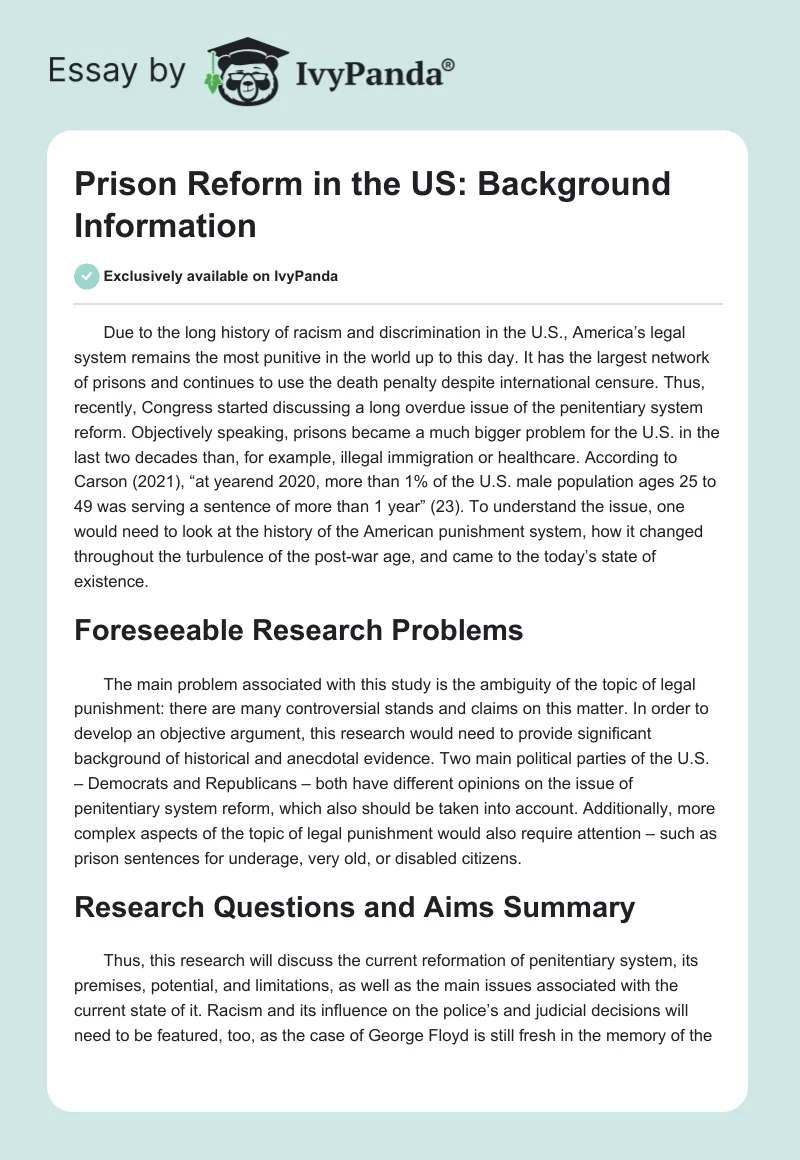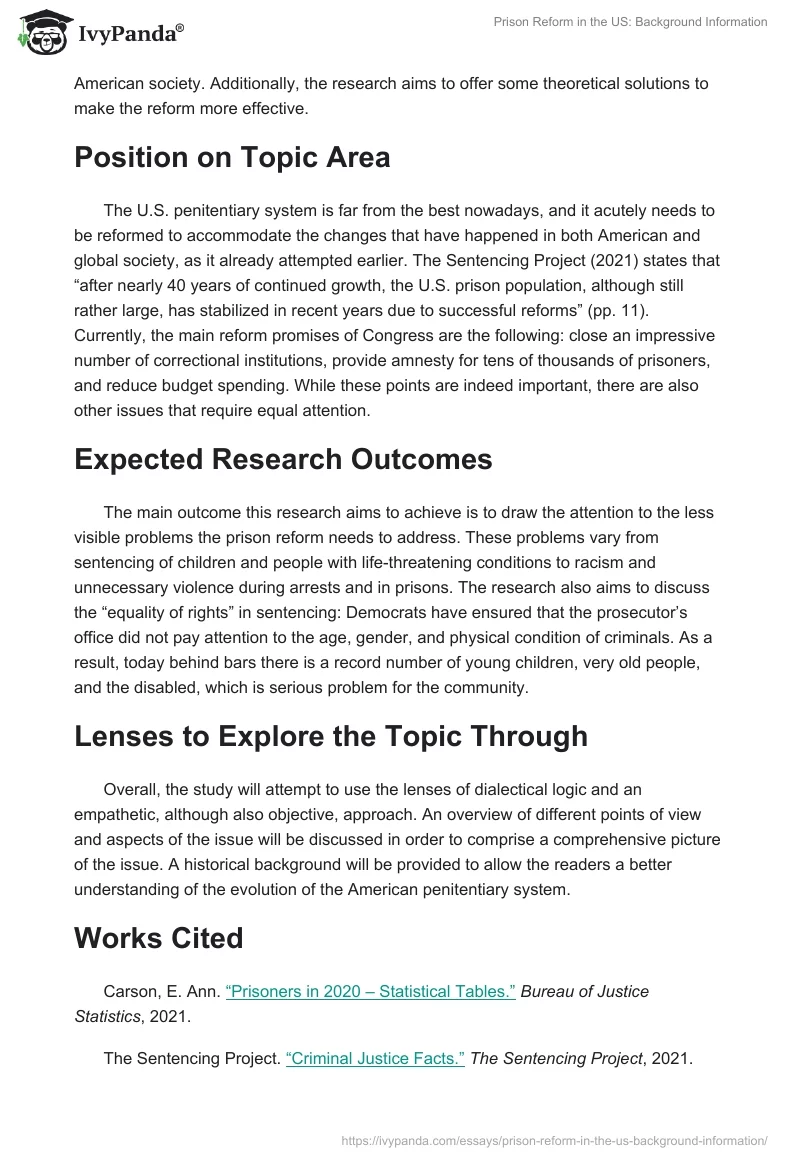Due to the long history of racism and discrimination in the U.S., America’s legal system remains the most punitive in the world up to this day. It has the largest network of prisons and continues to use the death penalty despite international censure. Thus, recently, Congress started discussing a long overdue issue of the penitentiary system reform. Objectively speaking, prisons became a much bigger problem for the U.S. in the last two decades than, for example, illegal immigration or healthcare. According to Carson (2021), “at yearend 2020, more than 1% of the U.S. male population ages 25 to 49 was serving a sentence of more than 1 year” (23). To understand the issue, one would need to look at the history of the American punishment system, how it changed throughout the turbulence of the post-war age, and came to the today’s state of existence.
Foreseeable Research Problems
The main problem associated with this study is the ambiguity of the topic of legal punishment: there are many controversial stands and claims on this matter. In order to develop an objective argument, this research would need to provide significant background of historical and anecdotal evidence. Two main political parties of the U.S. – Democrats and Republicans – both have different opinions on the issue of penitentiary system reform, which also should be taken into account. Additionally, more complex aspects of the topic of legal punishment would also require attention – such as prison sentences for underage, very old, or disabled citizens.
Research Questions and Aims Summary
Thus, this research will discuss the current reformation of penitentiary system, its premises, potential, and limitations, as well as the main issues associated with the current state of it. Racism and its influence on the police’s and judicial decisions will need to be featured, too, as the case of George Floyd is still fresh in the memory of the American society. Additionally, the research aims to offer some theoretical solutions to make the reform more effective.
Position on Topic Area
The U.S. penitentiary system is far from the best nowadays, and it acutely needs to be reformed to accommodate the changes that have happened in both American and global society, as it already attempted earlier. The Sentencing Project (2021) states that “after nearly 40 years of continued growth, the U.S. prison population, although still rather large, has stabilized in recent years due to successful reforms” (pp. 11). Currently, the main reform promises of Congress are the following: close an impressive number of correctional institutions, provide amnesty for tens of thousands of prisoners, and reduce budget spending. While these points are indeed important, there are also other issues that require equal attention.
Expected Research Outcomes
The main outcome this research aims to achieve is to draw the attention to the less visible problems the prison reform needs to address. These problems vary from sentencing of children and people with life-threatening conditions to racism and unnecessary violence during arrests and in prisons. The research also aims to discuss the “equality of rights” in sentencing: Democrats have ensured that the prosecutor’s office did not pay attention to the age, gender, and physical condition of criminals. As a result, today behind bars there is a record number of young children, very old people, and the disabled, which is serious problem for the community.
Lenses to Explore the Topic Through
Overall, the study will attempt to use the lenses of dialectical logic and an empathetic, although also objective, approach. An overview of different points of view and aspects of the issue will be discussed in order to comprise a comprehensive picture of the issue. A historical background will be provided to allow the readers a better understanding of the evolution of the American penitentiary system.
Works Cited
Carson, E. Ann. “Prisoners in 2020 – Statistical Tables.”Bureau of Justice Statistics, 2021.
The Sentencing Project. “Criminal Justice Facts.”The Sentencing Project, 2021.


